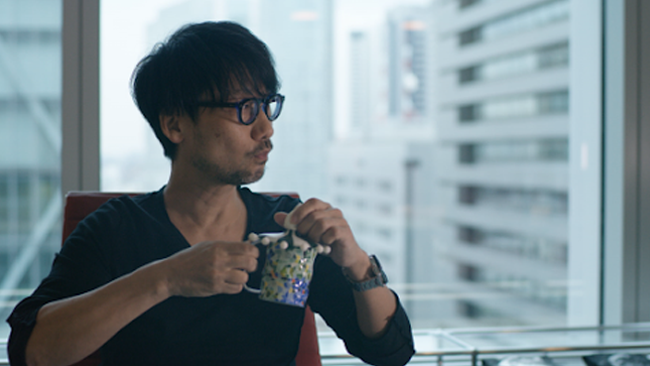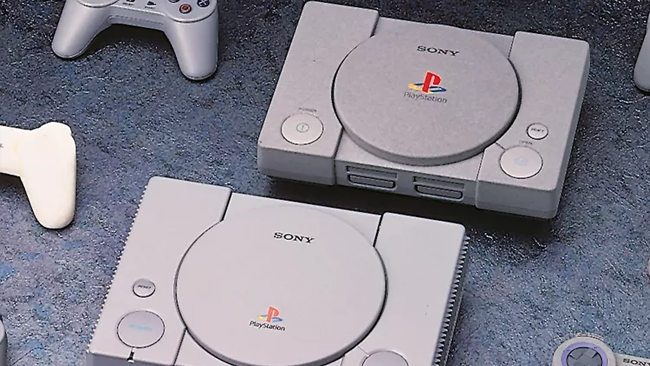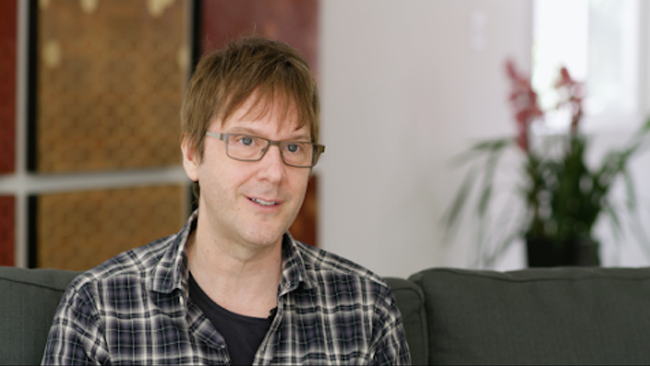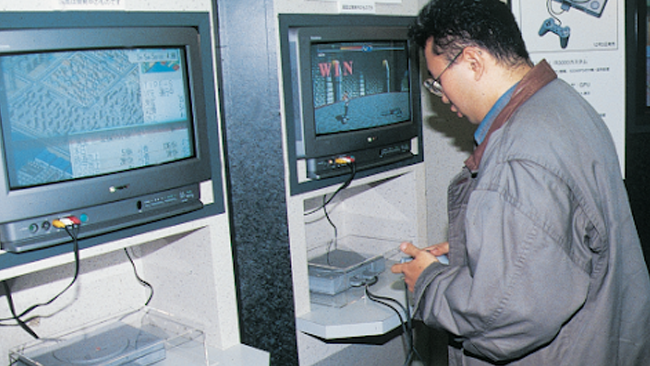From Bedrooms to Billions: The PlayStation Revolution doesn’t actually start with PlayStation. In order to have a revolution, there has to be something in need of change. The documentary kicks off with the “rivalry” between Nintendo and Sega in the late ’80s and early ’90s, and an era of 2D gaming in need of a shake up. Sony’s partnership with Nintendo began in the late ’80s, with Sony-made sound chips in the Super Famicom and Super Nintendo. That evolved into an agreement for new gaming technology—a disc-drive attachment for the Super Nintendo and a separate combo disc-drive/cartridge console called the “Sony Play Station.” The intention of this partnership was to offer game developers more storage space via optical media, but Nintendo felt Sony was overreaching a bit too much in what they wanted from it.
This original early ’90s “Play Station” idea was a far cry from what Sony would eventually create. After being snubbed by Nintendo, who announced a partnership with Philips for the CD attachment instead, an embarrassed Sony set to work creating not only their own console, but an entire business venture which would eventually become PlayStation. From Bedrooms to Billions: The PlayStation Revolution talks to a wide variety of gaming industry veterans to not only capture the information, but also the feeling of this time. It goes in-depth on what the gaming landscape was like, from certain people writing Sony off for not knowing what they were doing with manufacturing and curating a video game console, to developers’ reactions at the move to fully three-dimensional graphics and what that meant for their ideas.
Hideo Kojima discusses being able to finally realize his creative visions with a fully 3D Metal Gear Solid. Oddworld creator Lorne Lanning talks about his move from film to games in order to tell empathetic interactive stories. The creators of Resident Evil discuss their unique approach to new camera angles and using 3D game design for horror. The capabilities of the PlayStation console were a catalyst for newfound developer freedom—a revolution, if you will—and I was happy to see From Bedrooms to Billions: The PlayStation Revolution allow a lot of time to be spent with not just the PlayStation hardware, but that which makes the hardware so compelling: the games and the developers.
PlayStation wasn’t just successful because of the move to optical media or 3D graphics. Sure, that was part of it, but the documentary talks about how there were other failed attempts to do the same thing, perhaps most notably the 3DO. Sony’s success came at the nexus of numerous areas of expertise. Being a consumer electronics brand with manufacturing process in place helped them immensely. Courting third-party developers to create games for the system brought more talent to PlayStation (while Nintendo was reportedly notoriously difficult to work with as a third-party). And marketing the system to an older crowd, lapsed former gamers who had grown out of the relatively “children-focused” games on Nintendo and Sega, allowed Sony to tap into an underserved market. PlayStation made playing games “cool.”
From Bedrooms to Billions: The PlayStation Revolution really highlights the launch of PlayStation as a turning point for the video game industry, leading to what we know today. This in particular is the “PlayStation revolution” referenced in the film’s title, but PlayStation’s legacy continues well beyond 1994/1995.
A good majority of the film’s 2 hour and 42 minute runtime is dedicated to the original PlayStation. In fact, we don’t even get to the 1995 North American launch of the system until just over halfway in. Another 20 minutes or so are centered on the zeitgeist of PlayStation’s launch, marketing, and worldwide reactions. Again, much of this focuses on software, on games, from the weird new things like Parappa the Rapper and Vibribbon, to representation for female gamers with Tomb Raider. There were the hits, the nostalgic classics we all remember, and there were some odd unique titles that never saw the light of day outside of Japan. “It WAS a revolution,” Mark Cerny says plainly.
This segment ends with a long montage of scenes from PS1 games, 1 hour and 42 minutes after the film began. The driving music makes it seem like this could be the end of the documentary, but the film continues on for another hour. And it’s not quite that this nearly 3 hour runtime feels too long, but the pacing at which the next three generations of PlayStation are discussed. PS2 development is discussed in a fair amount of detail—arguably another revolution for PlayStation—but the pace really quickens when you start talking about the failures of the PS3, and the subsequent return to glory for the PS4. The PS3’s egregious $600 price point isn’t even directly mentioned, but rather quickly brushed over, despite the iconic PlayStation’s “$299” at the first ever E3 being a central talking point. But the biggest X-shaped hole in this second half isn’t even on the PlayStation side of things.
From Bedrooms to Billions: The PlayStation Revolution Review – The Console Which Must Not be Named
One of the difficulties From Bedrooms to Billions: The PlayStation Revolution seems to have is obvious limitations in being able to talk about Microsoft or Xbox. In fact, despite becoming a major—if not the primary—rival to PlayStation from the PS2 onward, the words Microsoft and Xbox are never uttered. At one point, Shahid Ahmad intentionally has to skirt around it when talking about the PS4 coming in and dominating E3 2013.
“Decisions about…” Ahmad pauses and grins. “…DRM and so on, which had been so controversial in…” another pause. “…other events… had also been made.” For the well-versed in the last decade of gaming history, it’s obvious that he’s talking about Microsoft’s infamous DRM blunder with the Xbox One, which was further underscored by Shuhei Yoshida and Adam Boyes’ “How to share a game on PS4” video. But unfortunately From Bedrooms to Billions: The PlayStation Revolution seems to have to talk around the big green elephant in the room. I’m certain these were restrictions set somewhere in the production process, more than likely by Sony. To its credit, the flow manages to mask a lot of these holes very well. I don’t blame the filmmakers for this. I expect many difficult conversations were had about how to portray the eras of PlayStation from the PS2’s release onward, and it manages to tell this story well enough, even if it does have to gloss over a lot of pertinent points because of those limitations.
From Bedrooms to Billions: The PlayStation Revolution then has two areas of focus. One, and arguably the main feature of the documentary, is how PlayStation revolutionized gaming in the mid ’90s with the release of the original PlayStation console. The other is a kind of comprehensive history of PlayStation through the launch and wild success of the PS4. It touches somewhat on the rise, fall, and rise again of Sony over the last two decades; the hubris-infused launch of the expensive and difficult to develop for PS3, and the humble determination of a bloodied and battle-worn publisher to get back in the fight with the PS4. One line indicates that the PS4’s success was make or break for the PlayStation brand. But a battle-worn Sony from what, and fight against who?
Attempting to talk about the last two decades of PlayStation without mentioning Xbox is like trying to discuss World War I and only acknowledging the Allies. The beginning of the documentary even talks about how those rivalries are important to the growth of everyone, from Sega and Nintendo, to the failed 3DO, and a spurned Sony creating the PlayStation, the revolution would not have been possible without those conflicts pushing the industry forward. “When you have two companies fighting head-to-head, the whole market grows,” says Phil Harrison in regards to Nintendo and Sega. It’s narrative framing that sets the stage for what’s to come, but narrative framing that goes completely untouched in the latter half. Would the PS4 have been successful without Xbox as a foil? Probably, but it’s undeniable that the competitive “blue vs. green” nature of the industry for the last 20 years is woven into PlayStation’s history in more ways than one.
So the documentary goes from a rather lengthy, in-depth, and very complete history of not only the original PlayStation console, but the gaming industry of the ’90s as a whole, and then accelerates more and more quickly through each of the PS2, PS3, and PS4 consoles respectively—even getting into PSVR at one point—without the same kind of attention to the little details that drive the first half of the film. It briefly touches on details like digital storefronts opening up to new smaller games for release in the PS3 era, but doesn’t linger too long on any one area. Perhaps this is somewhat representative of just how insanely fast the industry has moved since the PlayStation’s launch, however. In a way, it seems kind of poetic to whirlwind through this period, even if it had me wishing for more thoughts, facts, and details regarding the PS2, PS3, and PS4. I was happy to see VR kind of being touted as another “revolution” of sorts, a whole new design language that developers needed to learn, mirroring some of challenges and opportunities when games made the leap from 2D to 3D.
Fortunately, this sense of reflection is what manages to bring it home strong. It pulls everything full circle and relates those early days of what drove PlayStation to great success to how Sony is treating its flagship brand again today. A focus in innovation. A focus on the players. A focus on the developers. A PlayStation revolution. It ends with a montage of PS4 games, a stark contrast to the montage of revolutionary PS1 games earlier in the film.
Could pacing have potentially been evened out a bit, trimming up the first half a bit and giving more time to the later consoles? Arguably yes, but perhaps those glaring Xbox shaped holes in the narrative would have been even more obvious then. One then starts to imagine what this might look like as a longer Netflix series or something similar, that could set pacing episode by episode, giving more time and attention to individual eras. It’s already lengthy runtime makes it clear the filmmakers had a LOT of material to work with for this documentary, and with everything that’s packed into it, I have to wonder what ended up on the cutting room floor when the final edit was all finished.
From Bedrooms to Billions: The PlayStation Revolution is an excellent film, one I’d even call required viewing for any PlayStation fan. It gives great insight into Sony as a company, PlayStation as a brand, what ultimately kicked off the era of video games as we know them today. If you want to know where we’re headed, look at where we’ve been. I’ve been a PlayStation fan since the beginning, but seeing this history laid out in front of me has me more excited than ever for what’s ahead. In the past 25 years, Sony has been a major player in redefining the landscape of video games, and From Bedrooms to Billions: The PlayStation Revolution is an essential look at how it all began and why that’s still so important and relevant today.
From Bedrooms to Billions: The PlayStation Revolution releases on Blu-ray and digital platforms on September 7th.
Gracious Films and Rebellion provided us with early access to a digital From Bedrooms to Billions: The PlayStation Revolution review screening. For more information, please read our Review Policy.












